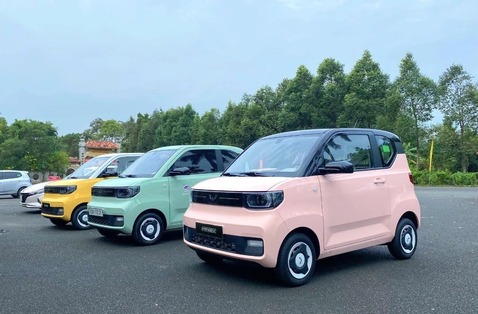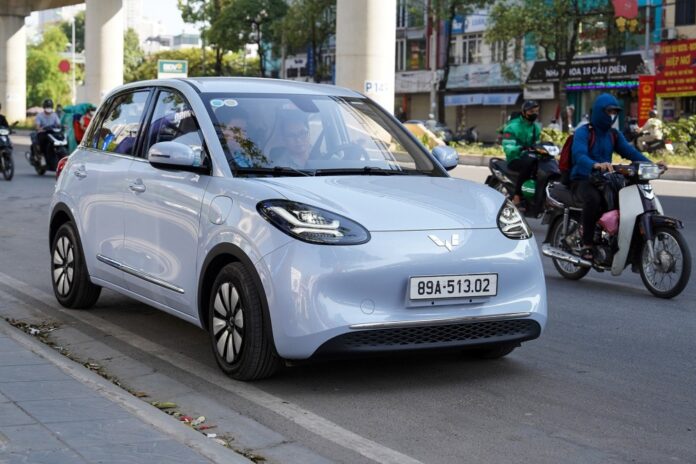In May 2025, TMT Motors announced its decision to invest nearly VND 100 billion in establishing a subsidiary, TMT Energy Solutions JSC, specializing in electric vehicle charging stations.
The company plans to deploy a network of up to 30,000 charging stations with 60,000 charging points nationwide. With the Vietnamese electric vehicle market still in its infancy and TMT itself experiencing a challenging year in business, this large-scale investment move has raised questions: Is it a strategic step or a risky gamble?
Assessing TMT Motors’ Financial Health Amid the Decision to Invest VND 100 Billion in Charging Stations
According to the 2024 financial report, TMT Motors recorded its worst performance in recent years. Specifically, the company reported a net loss of VND 325.4 billion, compared to a profit of VND 22.3 billion in 2023. Notably, a negative gross profit of VND 49.9 billion in the past year indicates that the company is selling vehicles below cost to compete for market share through a pricing strategy.
As of the end of 2024, total assets decreased by 32.4% to VND 1,465.8 billion. Inventories accounted for VND 485.4 billion, nearly one-third of total assets. Additionally, accumulated losses reached VND 269.7 billion, equivalent to nearly 73% of charter capital, leading to TMT shares being put on the warning list by the Ho Chi Minh City Stock Exchange.

Wuling electric car sales in Vietnam in 2024 exceeded 1,300 units, compared to 591 units in 2023.
TMT’s financial structure also reveals an imbalance. The debt ratio reached VND 1,045 billion, significantly higher than owner’s equity (VND 185 billion), resulting in a debt-to-equity ratio of 5.6 times. Short-term debt accounts for more than 75%, mainly bank loans for production and vehicle imports.
In the first quarter of 2025, TMT reported a profit of VND 34 billion due to cost-cutting measures and inventory clearance. However, considering the annual after-tax profit target of VND 270 billion, the company has only achieved over 12.5%.
While this indicates a long-term commitment to the production, assembly, and business of electric vehicles for some, the financial indicators above raise questions about the company’s decision to invest VND 100 billion in a charging station company, especially given the less-than-favorable electric vehicle business landscape.
Establishing charging stations involves more than just installing charging poles. It requires a monitoring system, maintenance, software synchronization, payment support, electricity management, and negotiations with localities for reasonable site acquisition. With a scale of 30,000 stations, if each station incurs an investment cost of approximately VND 300 million, the total investment capital will amount to VND 9,000 billion – 90 times the chartered capital of the newly established company.
Who Will Utilize the 30,000 Charging Stations?
According to the announcement, the new subsidiary aims to deploy an ecosystem of 30,000 charging points and 60,000 charging guns by 2030. This number surpasses the total number of existing charging stations in the country, including those of VinFast. To put this into perspective, as of the end of 2024, VinFast, the largest electric vehicle manufacturer in Vietnam, operated approximately 8,000 stations with nearly 90,000 charging guns.
The question arises: Who will TMT’s charging stations serve?
In 2024, TMT sold 1,358 electric vehicles, mainly the domestically assembled Wuling HongGuang Mini EV model. For 2025, the company targets sales of 8,075 vehicles, including 3,404 electric vehicles – an increase of nearly 2.5 times compared to the previous year, but still a small fraction of the market.
Even if TMT achieves its 2025 target of 3,404 electric vehicles and continues to grow in subsequent years, the current sales growth rate suggests that the system of 30,000 charging stations may still be excessive compared to the company’s vehicle deployment.

In addition to Wuling electric vehicles, TMT’s charging system will be expanded to accommodate other electric vehicle brands.
While TMT has stated that their charging system will be open to other brands, the issue lies in the fact that, apart from VinFast, major automotive brands in Vietnam, such as Toyota, Hyundai, Kia, Mazda, and Ford, have not announced any concrete plans to introduce affordable electric vehicles to the market. Meanwhile, Chinese electric vehicle brands that entered the market in 2024 are facing the harsh reality of low sales. BYD has not disclosed sales figures, and brands like Haima, Aion, and Dongfeng have become nearly invisible in the market. Both BYD and Omoda & Jaecoo seem to be focusing more on hybrid vehicles rather than pure electric ones.
On the other hand, VinFast, the only brand with impressive electric vehicle sales growth, has already invested in its own charging network and is offering free charging until mid-2027. With over 36,000 electric vehicles delivered in the first quarter and 80,000 in 2024, VinFast has a compelling reason to retain customers within its independent ecosystem, and there is little incentive for them to utilize TMT’s charging stations.
TMT Motors may be aiming to take the lead in capturing infrastructure market share – a segment that remains untapped in the affordable electric vehicle market. However, if the electric vehicle market fails to grow at the expected rate, they may encounter obstacles.
Given the current financial situation, TMT Motors’ investment of nearly VND 100 billion in a charging station company is a risky move. The company is betting on a market that has not yet fully blossomed, while also struggling to sell their affordable electric vehicles. A charging ecosystem is only efficient when coupled with a significant electric vehicle market share, which TMT currently lacks.
















